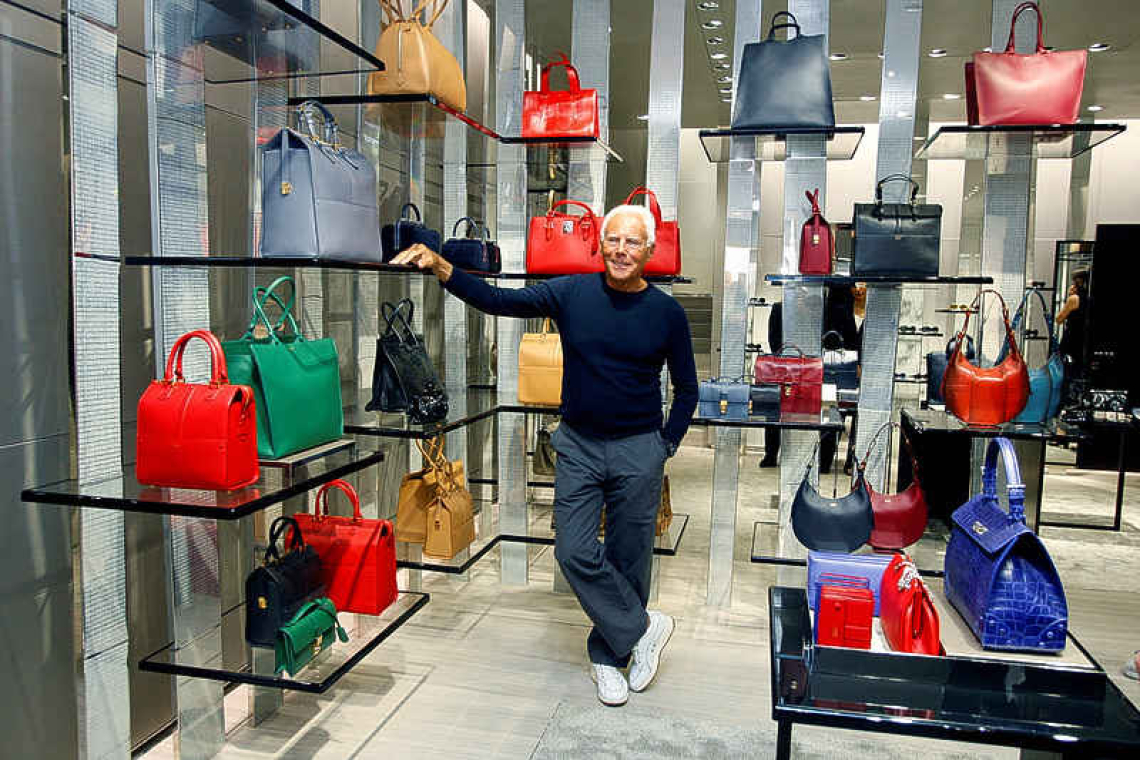ROME--It all began with the jacket. Giorgio Armani twisted and bruised the angular piece of clothing - tearing out the padding, adjusting the proportions, moving the buttons - until he was left with something supple as a cardigan, light as a shirt. "Removing all rigidity from the garment and discovering an unexpected naturalness," as he put it years later. "It was the starting point for everything that came after." His 1970s reimagining of the jacket - a study in nonchalance - was to be his statement of purpose as a fashion designer. Elegance, he argued, meant simplicity. That principle, applied to great acclaim over a five-decade-long career, would produce bestselling minimalist suits and turn his eponymous brand into a vast conglomerate producing haute couture, prêt-à-porter, perfumes and home interiors. Known to industry admirers as "Re Giorgio" - King Giorgio - Armani became synonymous with Italian style, helping to dress a generation of successful women, as well as men who wanted less stuffy attire. He combined the flair of the designer with the forensic attention to detail of the executive, running a business that generated billions of dollars in revenue each year and helping to make contemporary Italian fashion into a global phenomenon. Despite being one of the world's top designers, he carefully guarded his own privacy and kept a tight grip on the company he created, maintaining its independence and working with a small and trusted group of family members and long-term associates. Armani, a handsome man with piercing blue eyes and silver hair, often said that the point of fashion was to make people feel good about themselves - and he railed against the rigid, fussy lines that traditionally defined high tailoring. "That's a weakness of mine that affects both my life and my work," he told "Made in Milan", Martin Scorsese's documentary about him, in 1990. "I'm always thinking about adding something or taking something away. Mostly taking something away. I can't stand exhibitionism." Armani has died, aged 91, the Armani company said of its founder and CEO on Thursday, without giving a cause of death. "He worked until his final days, dedicating himself to the company, the collections, and the many ongoing and future projects," the company said. The funeral would be held privately, it added. Giorgio Armani was born in 1934 in Piacenza, a town in the industrial heartland of northern Italy, close to Milan, one of three children of Ugo Armani and Maria Raimondi. His father worked at the headquarters of the local Fascist party before becoming an accountant for a transport company. His mother was a homemaker. Despite their limited means, his parents possessed an inner elegance, Armani told "Made in Milan", and Maria's sense of style shone through in the clothes she made for her three children. "We were the envy of all our classmates," he said. "We looked rich even though we were poor." As a boy he experienced the hardships of World War Two. In his autobiography, "Per Amore" ("For Love"), he tells of how he dived into a ditch and covered his younger sister Rosanna with his jacket when a plane began firing overhead. The family moved to Milan after the war. The city seemed very cold and big to him at first, though he soon came to appreciate its discreet beauty, he told Scorsese. It would be the start of a lifelong association. In Milan, he developed a love for cinema that later influenced his career. Eventually he would lead his fashion group from there, helping to turn the unglamorous, industrial city into Italy's fashion capital. Armani studied to become a doctor, but dropped out after two years at university and then did his military service. He took his first steps in fashion - which he never formally studied - when he was offered a job at renowned department store La Rinascente to help dress the windows. His first big break came with an invitation to work for Italian designer Nino Cerruti in the mid 1960s. There he began to experiment with deconstructing the jacket. "I started this trade almost by chance, and slowly it drew me in, completely stealing my life," he told trade publication Business of Fashion in 2015. As a designer he quickly tapped into two important trends in Western society in the late 20th century - a more prominent role for women and a more fluid approach to masculinity. "I had the feeling of what actually happened - women getting to the forefront in the workplace, men accepting their soft side - early in my career, and that was the base of my success," Armani said in an interview with Esquire magazine to mark his 90th birthday, in 2024. Armani debuted his first menswear collection in 1975 and was soon popular in Europe. Five years later, he won the hearts of the U.S. glittering class when he dressed Richard Gere for the 1980 film "American Gigolo", beginning a long association with Hollywood. That same year, luxury department store Bergdorf Goodman became the first U.S. retailer to launch an in-store Armani women's boutique, securing the designer's transatlantic reach. In 1982, Time magazine featured him on its cover under the headline "Giorgio's Gorgeous Style". A self-confessed perfectionist, the designer oversaw every detail, from advertising to models' hair. He often said he couldn't wait for weekends to end so that he could get back to work. "I've never taken drugs, yet for me the surge of adrenaline I get from my work is better than any hallucination or artificial high. It's a kind of orgasm (if I may use this expression)," he wrote in "Per Amore".







